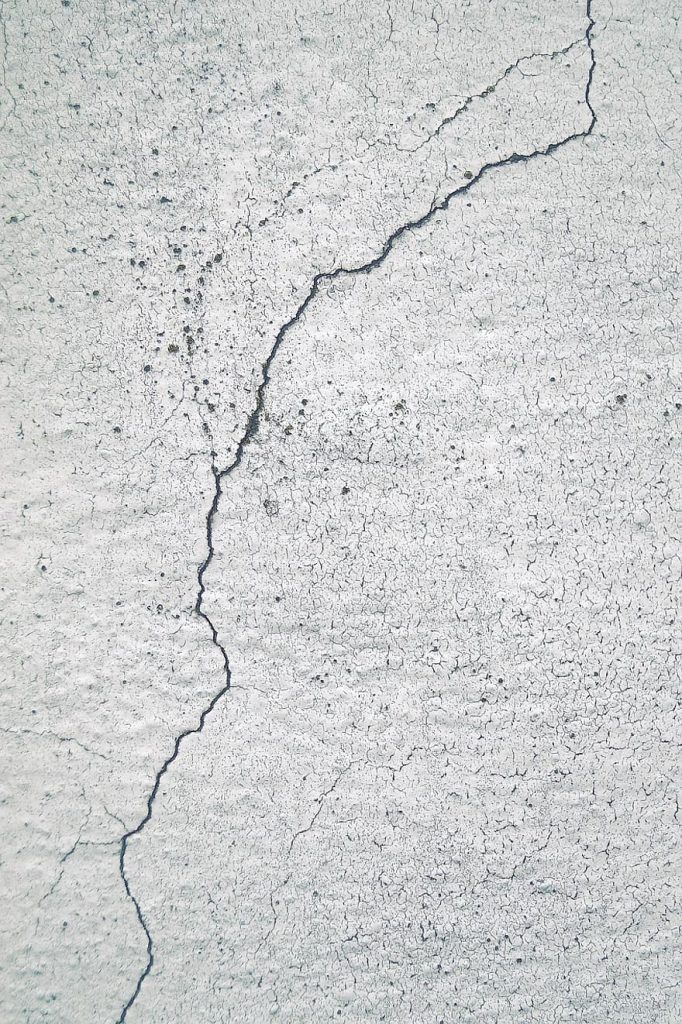Summary
– The different types of cracks in the plaster
– Removal of the coating
– Causes of cracking and delamination of facade coatings
The facade coating protects your masonry but can also be a decorative finish. It should be kept in good condition.
Coating can crack and peel off just like facade paints, whether they are applied to the masonry or the coating itself.
The different types of cracks in the plaster
A distinction must be made between superficial cracks in the plaster and total cracks in the plaster.
– The surface crack only touches the surface of the plaster without passing through it.
– Deep or total cracking affects the entire thickness of the plaster and may originate from the building structure itself.
There are two types of cracks depending on their location:

- Those located at the singular points:
- ◦ acroteria: pedestals supporting ornaments placed at the top of a pediment;
- ◦ angles,
- ◦ chimney stumps,
- ◦ window sills,
- ◦ banners: horizontal projection surrounding a facade,
- ◦ unprotected wall heads,
- ◦ caps: roof overhang
- Those distributed on the facade.
The different types of cracks in the coating
Types of cracks: appearance and depth
| Crackling | Microcrack | Crack | Lizard Cracks | |
|---|---|---|---|---|
| Aspect | Mesh network L = < 0.2 mm | Linear opening or mesh size L = < 0.2 mm | Irregularly traced linear opening between 0.2 mm and 2 mm | Opening > 2 mm |
| Depth | Superficial layer of plaster. | The entire thickness of the coating. | The entire thickness of the plaster and sometimes of the masonry (in part or in full) | The entire thickness of the plaster and masonry |
Removal of the coating
The plaster can peel off as a result of cracking, especially if the crack is widely distributed over the facade and if the phenomenon is deep.
The area of delamination can be localised, small or more generalised and/or in large slabs.
The resistance of the rendering depends directly on the quality of the preparation of the substrate, which must be hard, stable, adherent, sufficiently porous and of course clean.
Causes of cracking and delamination of facade renders
Modern single-layer coatings can be removed in sheets or can be detached from the substrate without showing visible peeling marks.
Before repainting, it is advisable to check that the plaster holds well:
- Probe the facade, especially where there are cracks, but if in doubt, probe the entire facade with a mallet or call a professional.
- If this sounds hollow, the plaster no longer adheres to the material.
The possible causes are:
– micro-organisms having weakened the coating,
– movement of the structure,
– no expansion joints,
– Poor adhesion of the plaster on the substrate due to poor surface preparation or to a poorly prepared surface or to an application that does not comply with the rules of the trade.
Crackling is often due to the trowel being used too hard when applying the plaster or drying too quickly (strong wind or excessive heat).
If you wish, you can contact a specialist to audit your facade. They will be able to provide you with a tailor-made estimate to inform you of the condition of your structure. Their reports will help you plan and prepare future maintenance and remediation projects.